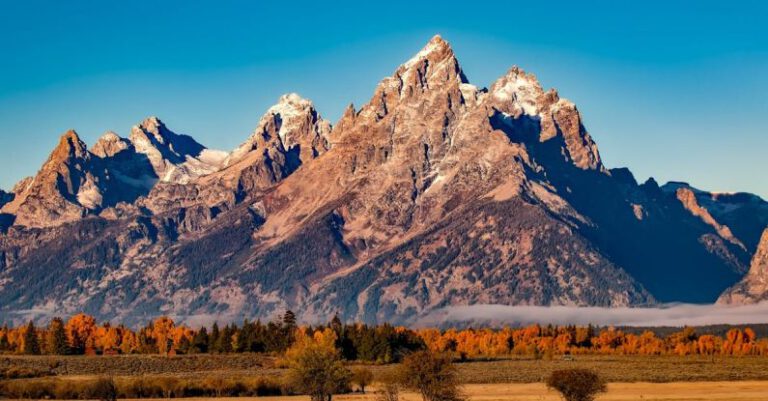How to Plan an Rv Itinerary with the Best Destinations?
Embarking on an RV adventure is an exciting way to explore the great outdoors and create unforgettable memories. Planning an RV itinerary with the best destinations requires careful consideration to ensure a smooth and enjoyable journey. By following some key tips and strategies, you can map out a route that takes you to stunning locations and maximizes your travel experience.
Research and Destination Selection
Before setting out on your RV trip, it’s essential to conduct thorough research on potential destinations. Consider the type of experience you are looking for – whether it’s a scenic mountain retreat, a beachside paradise, or a cultural city exploration. Look for destinations that offer a mix of activities and attractions that align with your interests and preferences.
When selecting destinations, take into account the driving distance between each stop. Aim to create a balanced itinerary that allows for a comfortable travel pace and ample time to explore each location. Consider the duration of your trip and the number of days you want to spend at each destination to ensure a well-rounded experience.
Mapping Out Your Route
Once you have selected your destinations, it’s time to map out your route. Utilize online mapping tools or GPS navigation systems to plan the most efficient and scenic driving route. Take note of any road closures, construction zones, or potential traffic delays that may impact your travel time.
Consider incorporating pit stops along the way to break up long driving stretches and explore hidden gems off the beaten path. Research RV-friendly campgrounds or overnight parking options at each destination to ensure you have a place to stay. Make reservations in advance, especially during peak travel seasons, to secure your spot and avoid any last-minute hassles.
Budgeting and Expenses
Budgeting for an RV trip involves considering various expenses, including fuel costs, campground fees, food, activities, and any unforeseen emergencies. Determine a daily spending limit to help you stay within your budget and avoid overspending. Research affordable dining options, free attractions, and discount passes that can help you save money along the way.
Factor in the cost of RV maintenance and repairs, insurance coverage, and emergency roadside assistance to ensure you are prepared for any unexpected expenses. Keep a detailed record of your expenditures to track your spending and make adjustments as needed to stay on budget.
Packing Essentials and Gear
Packing efficiently for an RV trip is crucial to ensure you have everything you need for a comfortable and enjoyable journey. Create a checklist of essentials, including clothing, toiletries, camping gear, cooking supplies, outdoor equipment, and any personal items you may need.
Organize your belongings in storage containers or bins to maximize space and keep your RV clutter-free. Pack versatile clothing options that can be layered for changing weather conditions and outdoor activities. Don’t forget to bring along entertainment options, such as books, games, or music, to keep you entertained during downtime.
Safety and Emergency Preparedness
Prioritize safety and emergency preparedness when planning your RV itinerary. Familiarize yourself with RV driving techniques, such as parking, backing up, and navigating tight spaces, to ensure a smooth and safe journey. Check your RV’s tires, brakes, lights, and fluid levels before hitting the road to prevent breakdowns or accidents.
Prepare an emergency kit that includes first aid supplies, tools, spare parts, flashlights, batteries, and a portable phone charger. Research emergency services along your route, such as hospitals, towing companies, and RV repair shops, in case you encounter any issues on the road.
Exploring Your Destinations
Once you have arrived at your destinations, take the time to explore and immerse yourself in the local culture and attractions. Participate in outdoor activities, such as hiking, biking, fishing, or kayaking, to experience the natural beauty of your surroundings. Visit museums, historical sites, art galleries, or local markets to learn more about the region’s history and heritage.
Engage with the local community, interact with residents, and try regional cuisine to get a taste of the destination’s unique flavors. Capture memorable moments through photography or journaling to document your travel experiences and create lasting memories. Embrace spontaneity and be open to unexpected adventures that may arise during your journey.
Reflecting on Your RV Experience
As your RV trip comes to an end, take time to reflect on your experiences and the memories you have created along the way. Consider what aspects of the trip you enjoyed most and how you can incorporate them into future travels. Share your stories and photos with friends and family to inspire them to embark on their own RV adventures.
Evaluate your itinerary, noting what worked well and areas for improvement, to enhance your planning process for future trips. Keep a travel journal or scrapbook as a keepsake of your RV journey, capturing the highlights, challenges, and lessons learned. Embrace the freedom and flexibility of RV travel as you continue to explore new destinations and make lasting connections with fellow travelers.
In conclusion, planning an RV itinerary with the best destinations requires careful research, strategic planning, and a sense of adventure. By selecting diverse destinations, mapping out your route, budgeting wisely, packing efficiently, prioritizing safety, and exploring your surroundings, you can create a memorable and enriching travel experience. Embrace the journey, savor the moments, and let the open road lead you to new discoveries and unforgettable adventures.






